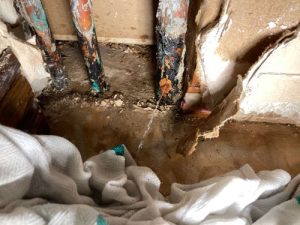The year 2023 was the warmest since records began in 1850, putting it at 2.43 degrees Fahrenheit above the preindustrial average, according to the U.S. National Oceanic and Atmospheric Administration (NOAA). The record was driven by fossil fuels and an El Niño climate pattern which has continued into 2024, making it likely that this year will rank among the five warmest on record. Along with potentially challenging heat conditions in many areas of the country, water conservation is an ongoing concern, with at least 40 states anticipating near-term water shortages. The causes for the potential shortfall are well known and include climate change, which makes rain and snowfall unreliable, poor management of demand from a growing population, and water pollution.
 />Water loss due to leaks compounds the problem, as an average of 14 to 18 percent of total daily treated potable water in the United States is lost through leaks, with some water systems reporting water-loss rates exceeding 60 percent. As much of the nation’s water and wastewater infrastructure was built over fifty years ago, water systems are racing against time to make crucial upgrades, often without adequate funding. Residential leaks also contribute to overall water loss, with 12 percent, on average, of household water lost to leaks from interior plumbing and exterior water service lines. A single exterior household water line break can waste 15 thousand gallons, based on average flow rates and water shut-off times. In total, the U.S. Environmental Protection Agency estimates annual household leaks across the U.S. cause a staggering 900 billion gallons of water loss, which is equal to the annual usage for approximately 11 million households.
/>Water loss due to leaks compounds the problem, as an average of 14 to 18 percent of total daily treated potable water in the United States is lost through leaks, with some water systems reporting water-loss rates exceeding 60 percent. As much of the nation’s water and wastewater infrastructure was built over fifty years ago, water systems are racing against time to make crucial upgrades, often without adequate funding. Residential leaks also contribute to overall water loss, with 12 percent, on average, of household water lost to leaks from interior plumbing and exterior water service lines. A single exterior household water line break can waste 15 thousand gallons, based on average flow rates and water shut-off times. In total, the U.S. Environmental Protection Agency estimates annual household leaks across the U.S. cause a staggering 900 billion gallons of water loss, which is equal to the annual usage for approximately 11 million households.
In addition to wasting water, pipe repairs can be an unexpected cost for homeowners who may be unaware of their responsibility for service lines on their property. In partnership with over one thousand water service providers across North America, The NLC Service Line Warranty Program by HomeServe offers homeowners optional protection plans to expedite and cover the cost of repairing or replacing private-side water lines and interior plumbing and drainage lines. Expeditiously addressing these leaks minimizes resulting water loss.
The solution includes homeowner education to clarify service line responsibility and understanding of how to solve issues through the provider’s program. Additionally, HomeServe’s ServLine leak protection program, currently implemented by over 150 water systems, offers reimbursement of a high water bill due to a leak. The program requires that a leak be repaired prior to bill forgiveness, incentivizing the customer to address the problem quickly. Offering these solutions reduces waste of a crucial resource while increasing customer satisfaction with the water provider.

